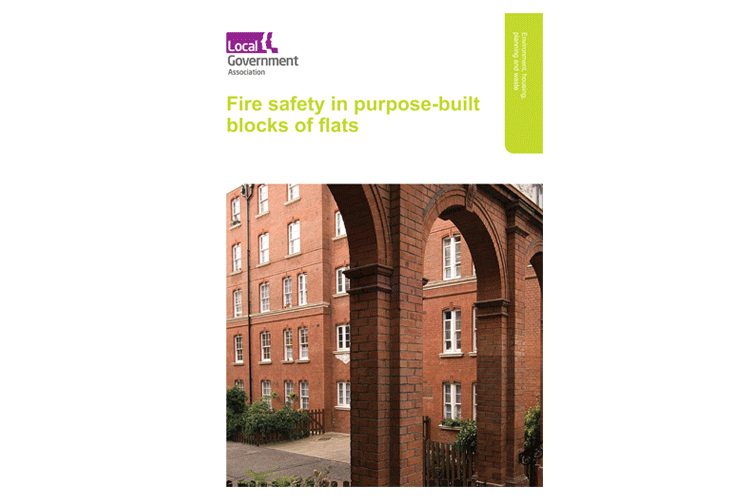There are four different fire risk assessment types that can be carried out for a purpose-built block of flats. The differences come from the extent of the building that is undergoing the required inspection for fire risk. The fire risk assessment must be the correct one for the particular type of premises and the amount that has been revealed with regard to its structural protection.
The landlord of the block of flats is considered the Responsible Person, who in the event of a fire, has to ensure the safety of all the occupants of the block of flats. A responsible person needs to be clear as to what is necessary and the way it is going to be achieved.
Guidelines for the four types of assessments that need to be done for residential apartment blocks are given below. This can help you to determine the assessment that is the right one for your block of flats.
Type 1 – Common parts only (non-destructive)
A Type 1 fire risk assessment is the basic fire risk assessment required for the purpose of satisfying the Fire Safety Order (FSO).
This inspection of the building is non-destructive. It requires considering the arrangements made for a means of escape as well as an examination of at least a few of the entrance doors to flats. It requires taking into consideration any construction made to separate the flats from the common parts, as far as practicable reasonably, without any need for the opening of any construction. In this mode of fire assessment, there is no need to enter the flats beyond the entrance.
Where common parts contain false ceilings that are demountable, samples of false ceiling tiles that are readily accessible must be taken. At the same time, a sample of service risers can be opened, if during the inspection such access is practically possible.
Inadequate compartmentation and poor fire stopping can lead to serious deficiencies in fire protection to the structure, but if this is not apparent, a Type 1 inspection is adequate for flats that are purpose built. If any doubts arise, then, the action plan of a Type 1 assessment needs to recommend that specialists carry out another type of assessment for fire risk. This must not be a generic recommendation for this Type 1 assessment and must clearly identify the issues that give rise to doubts.
Type 2 – Common parts only (destructive)
The risk assessments in a Type 2 inspection needs to examine the same areas as those inspected in a Type 1 assessment, but here some samples are chosen for destructive inspection. You might require the presence of a contractor for opening up of the construction and for making any repairs that are needed after the inspection is completed. To check the integrity of separating construction through destructive inspection you will need a sample of flats. As this work is of a destructive nature, it is better if the testing is carried out in flats that are vacant.
Type 2 assessments for fire risks are one-off affairs and should be carried out only if there is there is a reasonable doubt of the ability of the structure to prevent the fire from spreading to another flat, from its point of origin. It is not enough that age alone is considered a factor that influences the need for a Type 2 assessment.
Type 2 assessments are called for when recommended in the report on a Type 1 assessment but must be justified and not considered an automatic necessity.
Type 3 – Common parts and flats (non-destructive)
A Type 3 assessment requires the same work as in a Type 1 assessment but exceeds the scope of the FSO, though it must not in any way contravene the Housing Act. In this assessment of fire risk, the arrangements for fire detection (smoke alarms) and the means of escape must be inspected in a sample of flats. Inside the flats the assessment is non-destructive, but it is essential that the fire resistance of doors leading to rooms be considered. Fire prevention measures are not considered if they are within the control of the landlord or responsible person, though heating and electrical installations maintenance may be looked at.
Type 3 assessments may be necessary for rented flats if any serious risk of fire to residents is perceived in the case of fire in their flats. This risk may arise because of the age of the flats, and suspicion of material alterations that are not authorised and are widespread. This assessment may not be possible in flats that are on a long lease, that will not allow access to freeholders.
Type 4 – Common parts and flats (destructive)
Type 4 assessment is the same as Type 3 assessment in scope, other than that it will allow for destructive inspection and testing in both flats and common parts carried out in some sample areas and flats that are selected. It will require a contractor to be present to both to open up any construction for inspection, and then to make it good after the inspection and testing are completed. Due to the nature of the work, it is often necessary to carry out these tests and inspection in flats that are vacant.
These are the guidelines for a fire assessment that is comprehensive but is the right thing only in circumstances that have their limitations. It may be necessary when a new landlord acquires a block of flats, and where the history of any works carried out is not known, and there is an apprehension that residents could be at risk in fires in their apartments or in that of their neighbours.
It is important that before any destructive inspection is carried out that any asbestos register maintained must be inspected so that the risk of disturbing asbestos is ruled out




